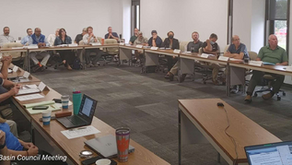Better Data Quality is a Significant Outcome of Forecasting Lifecycle Costs
- JD Solomon

- Dec 8, 2021
- 3 min read

A lifecycle replacement forecast provides a financial forecast of the total investment needed by an organization to keep its facilities and infrastructure in good working order. Also called a Renewal and Replacement (R&R) Model or an Asset Health Forecast, establishing expectations of total and year-to-year investments is the fundamental aspect of asset management, budgeting, and pricing/rate making. The forecast also has another significant value – it is the best way to verify the quality of your data.
A lifecycle replacement forecast has the following characteristics:
20-year forecast period (typical)
Output is Expected Yearly Costs
Primary Inputs
Equipment List
Replacement Values
Remaining Useful Life
Rebuild Frequency
Rebuild Costs
The data verification value of each input is evident in some cases and not as apparent in others.
Equipment List. The first aspect is whether the total number of assets is more or less than expected. Completeness of the attribute information is The second aspect. The third aspect is whether all assets are aligned with their parent systems or locations. How good is good enough? The mixed message is not perfect but everything else depends upon the equipment list.
Replacement Values. The central aspects are whether the system of record (they should all be in the CMMS/EAMS), whether the values are estimated or vendor/purchase verified, whether they are raw costs or include other multipliers for install or project costs, and what is the frequency of update. The area of replacement values is often overlooked because most facility types are gearheads and focus on condition first. Plus, accountants are only concerned with book values and insurance specialists' versions of replacement values.
Getting the fiscal attributes correct is as challenging as getting the physical attributes correct.
Remaining Useful Life. This starts with establishing some type of condition rating for all assets. Condition rating typically begins with a 1 to 5 scale, with "1" being like new and "5" being poor. Assets having condition ratings and assets having the same basis of condition ratings are the two most important aspects. Like replacement values, it is also helpful to have a field with the year of the condition rating for each asset. Ultimately, some art and science are used to convert condition scores to remaining useful life, but it all starts with assets having documented condition scores.
Rebuild Frequency. This touches on approaches to maintenance strategies. Rebuild frequency provides good insights into the preventative maintenance (PM) program and related documentation. Rebuild frequency is not well documented in most databases, so it takes us to a higher level of discussion at the asset class level. Looking at rebuild frequency is a great way to examine the PM program documentation closely.
Rebuild Costs. This area is usually poorly documented even if the PM program (tasks and frequency) documentation is good. Sometimes the information is suitable for assets like large pumps and motors. The higher level of discussion is usually at the asset class level and a percentage of replacement cost.
We have checked each type of input value. There is incredible value to it whether we build the lifecycle model or not. So we are done with the data review aspects, right? Wrong.
The most significant value is the holistic relationships of the inputs because all of the inputs must make sense independently and together. For example, it is relatively common in water systems to find more than 80% of the individual pipe asset attributes in the geographic information system (GIS) or the computerized maintenance management system (CMMS).
The holistic relationships of the individual inputs is often overlooked when evaluating data quality.
It is not uncommon to find data that makes no sense when taken together. One example is a pipe installed in 1921, made of poly-vinyl chloride (PVC), and in good condition. One class of PVC began manufacture in the mid-1950s and a second class in the early 1970s. A logical guess would be that the old pipe was replaced at some point with PVC, but that would be a logical guess.
Another example is Orangeburg Pipe, installed in 1984 and in poor condition. Orangeburg Pipe was from WWII until the early 1970s. In this case, two of the three pieces of data suggest old pipes, so it is difficult to say which pieces of the data are wrong.
A lifecycle replacement forecast provides a financial forecast of the total investment needed by an organization to keep its facilities and infrastructure in good working order. The insights gained are informative and necessary. The overlooked outcome, and equally valuable, is the data review that is necessary to build a model. There are some ways to work around data gaps to build a forecast, but there is no substitute for a clear understanding of where the data stands.
JD Solomon, Inc provides services related to facilities, infrastructure, and the environment. Contact us for more information on lifecycle forecasting, probabilistic modeling, renewal & replacement decision making, and asset management programs.










Commentaires